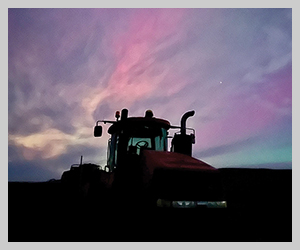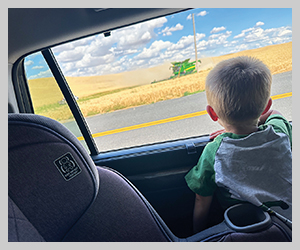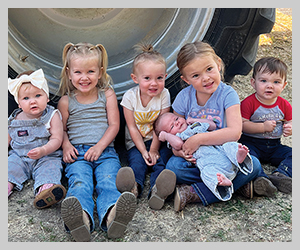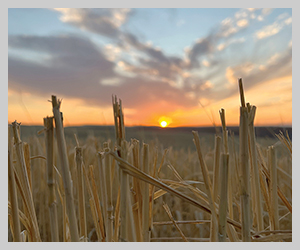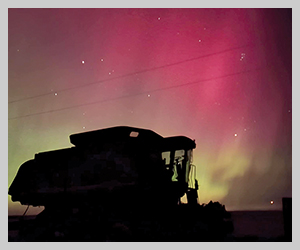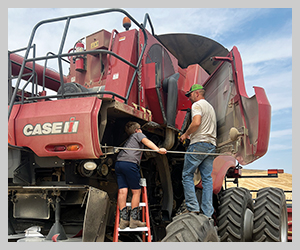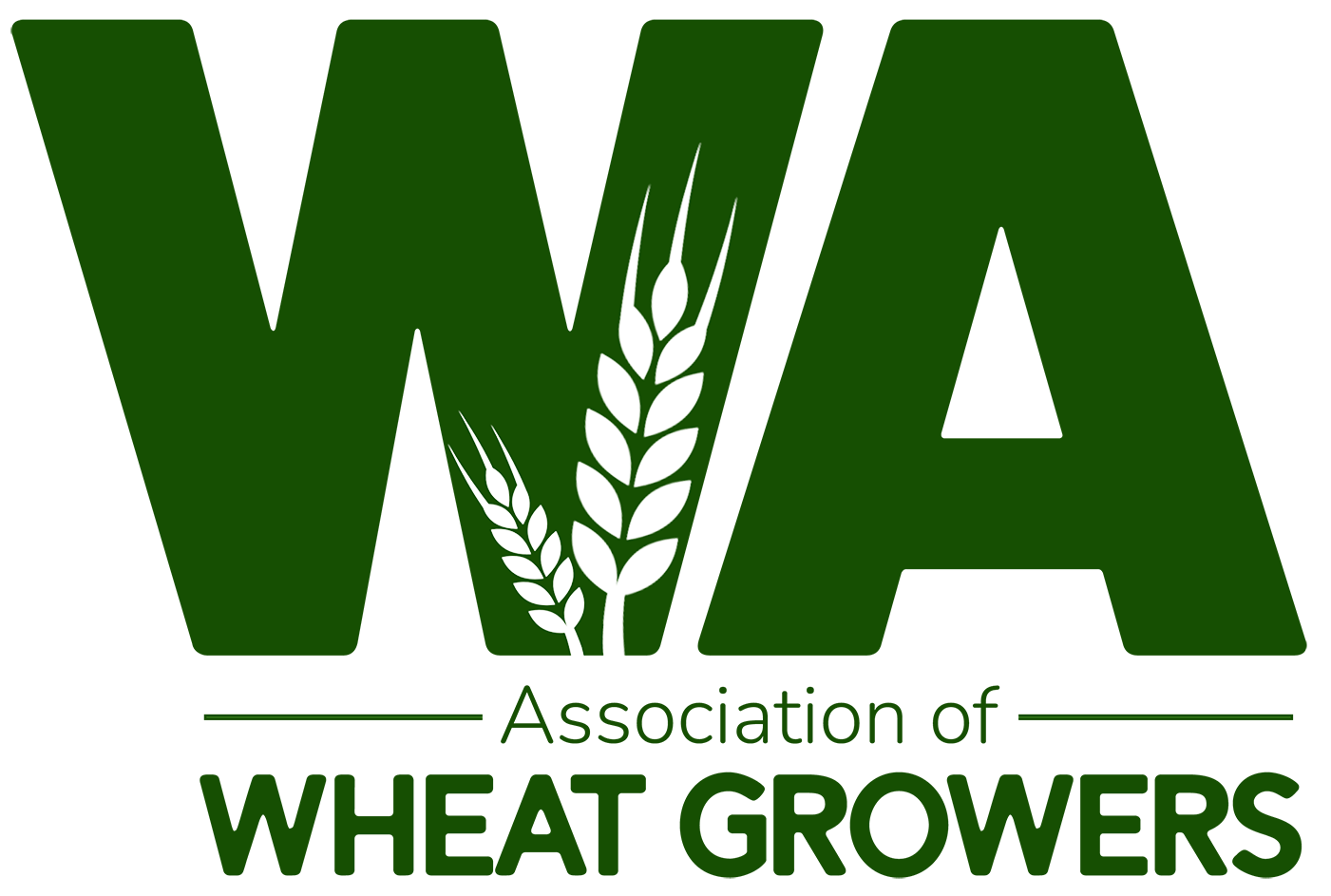From Peace Corps to hard-core soil conservationist Chris Laney, 1989/90 WAWG past president
2022August 2022
By Kevin Gaffney
For Wheat Life
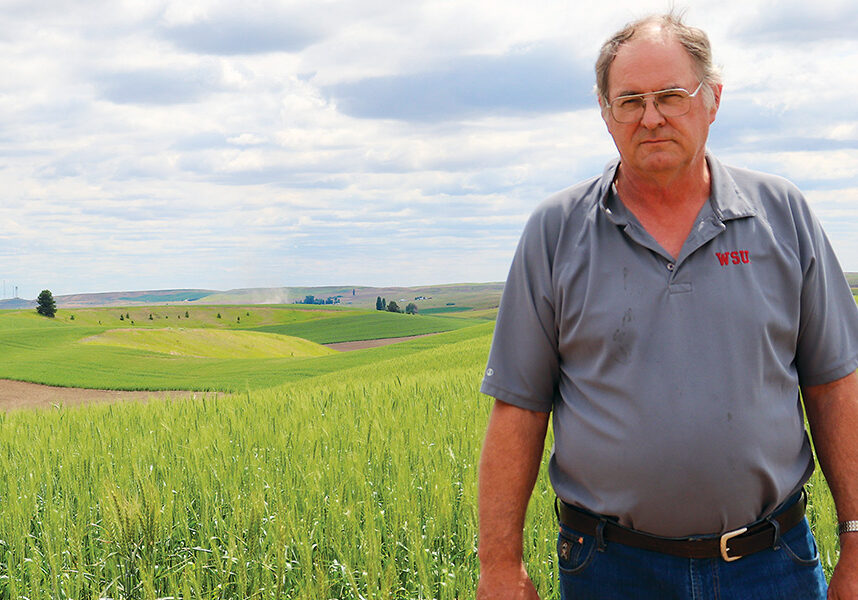
Founded in 1878, Lanefield Farms is located in southeast Lincoln County a few miles north of Sprague, Wash. Chris Laney is the fourth-generation owner/operator of the farm. Laney took the reins from his father, Bob Laney, in the 1970s. The farm was started by Laney’s great-grandfather, William Gaffney, who came west from Iowa. Laney’s paternal grandfather, Frank Laney, Sr., married William Gaffney’s only surviving child, Nellie.
Chris Laney was the third of five siblings in the Laney family, with two older brothers, John and Steve, younger brother, Tom, and baby sister, Norine. He was raised in Sprague and attended the local parochial school, St. Joseph’s Academy, through the 8th grade before attending and graduating from Gonzaga Prep in Spokane in 1968. He went on to Washington State University (WSU), graduating in 1972 with a degree in agricultural economics.
Laney didn’t concentrate only on ag during those years, however, working on the student publications team for three years, including two years as sports editor for the Chinook yearbook and one year as yearbook business manager.
Soon after graduation, Laney entered the Peace Corps, serving in Sierra Leone in West Africa. His work involved two main roles: assistant to a livestock specialist for a British Technical Assistance Team that was performing a feasibility study for a proposed large cattle ranch operation on behalf of the World Bank and serving as a resident instructor to a dozen rotating ag college students at an underfunded former colonial cattle research station.
Laney completed his Peace Corps service and returned to the farm in 1974, where he began the transition of taking over the farm management from his father.
“I don’t remember suddenly coming to the realization that I was going to be a farmer, but it may have been pre-ordained. As a youth, I often heard, ‘Christopher! Go spend some time on the tractor with your father!’” he recalled. “One of my first tasks back on the farm was to computerize our farm bookkeeping records. There was no hurry to push my dad out. He had decades of valuable experience and knowledge. He and I both wanted to have a smooth, efficient generational transition that everyone was comfortable with.”
Lanefield Farms, incorporated in 1971, was traditionally in a two-year wheat-summerfallow rotation. They also had a cow-calf operation on their pasture land. The annual moisture is around 13 inches.
After Laney returned to the farm, one of his changes was to phase out the cattle operation, since the haying crew (his siblings) all began to leave the farm for school or urban careers.
“I transitioned the farm into a three-year rotation pattern, also establishing a divided-slope field format to provide better soil conservation and reduce erosion,” explained Laney. “My father had been an early proponent of soil conservation, helping to form the original Southeast Lincoln County Conservation District. He was the 1954 Conservation Farmer of the Year.
“He permanently parked the moldboard plows and established trashy fallow practices. Since then, we have installed over 20 terraces, several miles of sod waterways, buffer zones, CRP (Conservation Reserve Program) and tree plantings, and minimum tillage farming practices on our land.”
Laney first became involved with the Washington Association of Wheat Growers (WAWG) at the invitation of his neighbor, Jim Ringwood. Laney was immediately impressed with the programs and individuals active in the organization.
Laney quickly became involved, becoming a sidekick of Eddie Johnson of Wilbur. Laney helped work on environmental issues from drafting best management practices to dealing with important issues such as pesticide licensing and ag burning.
“Eddie Johnson and Bill Zagelow were two of our WAWG leaders at that time who could speak very intelligently and articulately on critical agricultural issues. I learned a great deal from them,” he said.
Laney was soon going through the leadership chairs of the Lincoln County Association of Wheat Growers. When he was serving as president for Lincoln County, a proposal by Washington Water Power for a generating plant powered by coal was proposed near Creston. It became quite controversial locally, both in regard to emissions and the routing of the transmission lines.
“There was some serious on-the-job leadership training for me,” said Laney. “I also served as the national legislation chair for WAWG during this period. The farm bill negotiations were very challenging concerning cross-compliance, payment limits, eligibility and several other issues.”
Laney’s work impressed the line officers enough to draft him to serve in the WAWG officer chairs. He served as president for the 1989/90 term.
“I faced two major issues as president of the association. The first was to get the organization back on its feet financially after the very first Tri-State Convention, held in Portland, went way over budget. We accomplished that with great membership and industry help.
“Secondly, we had to find a new executive director for the Ritzville WAWG office. Regrettably, the individual we hired did not work out permanently. I was fortunate to be followed by two outstanding line officers, Judy Olson and Dan Blankenship, who cleaned up my mess by instituting a shared leadership structure that worked effectively for many years.
“It was also during this time that we brought in a new Wheat Life editor, David Andersen, who completely redesigned the publication into the current magazine format that has made it one of the highest quality ag trade publications in the western U.S.
“Another significant challenge was finding candidates to go through the WAWG leadership chairs. It was down to the wire at my outgoing convention when I landed Andy Rustemeyer as our incoming secretary-treasurer in 1990. Then we signed up Phil Isaak the following year. The maturity and leadership of those two farmers I consider to be my best and lasting contribution to the organization.”
The most important mission of WAWG, in Laney’s opinion, would be to continue to educate and inform an increasingly urbanized populace and Legislature of the important role and needs of agriculture.
“As each new generation becomes more removed from our societal agricultural roots, farmers must be effective spokepersons,” noted Laney. “The current anti-science movement would seem to make this even more critical if farmers are to protect our most productive methods and tools.
“One of the most crucial challenges for WAWG will be to keep the organization energized in its third and fourth generation of farmers, especially with larger farms and shrinking farmer numbers. Current farm operators have to wear many hats, but they should never lose sight of how important their WAWG hat continues to be.
“A related challenge is for all of our rural communities. My hometown of Sprague is a startling example. What was once a thriving farm town now has no bank, no machinery dealer, no fertilizer plant, no Grange Supply or auto parts store, not even a tavern. It’s a community on life support with high school graduation classes as small as four. Gifted students or athletes have few good local options.”
Laney singled out two individuals for notable contributions to the ag industry. One was his mother, Eleanor Laney, who was instrumental in founding the Ag Forestry Program. She worked with Dr. Art Peterson of WSU in finding sponsorships, funds and publicity for the program, which has helped to form many industry leaders over the decades.
The other was Karl Kupers, former Harrington farmer and WAWG member. Though Kupers never served as WAWG president, Laney points to his huge impact in developing industry spokespersons at the county level. Kupers also led a Lincoln County delegation to South Dakota to Dr. Duane Beck’s research farm in 1996. This was the genesis for the eventual founding of the Pacific Northwest Direct Seed Association. Kupers also was a founding partner of Shepherd’s Grain.
Laney has no plans to retire anytime soon and continues to grow alfalfa and crop rotations of wheat, barley and canola on his farm. Laney and his wife, Linda, have two daughters, Kara and Juliann, and one son, Eric.



